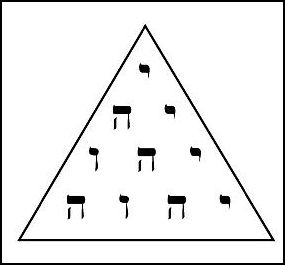
Spiritual Metaphor
The Sonnets’ deep spiritual connection
to the Great Pyramid.
It’s universally agreed that the Sonnets sequence is divided into three well-defined sections:
1_______17
Sonnets 1~17 are known as the Procreation sonnets, wherein the poet is addressing the Fair Youth, urging him to have a child and thereby ensure his memory will live on in his progeny. After Sonnet 17 the subject is completely dropped, never to be brought up again in the entire sonnet sequence.
18______________________________________________________125
Sonnets 18~125 comprise the Fair Youth sonnets. (Since the first 17 are also addressed to the Fair Youth, most scholars categorize the entire set, 1~125, as Fair Youth sonnets, noting that they include the Procreation sonnets as a sub-set.)
126
Sonnet 126 is a glaring anomaly. It has only 12 lines instead of 14 and its rhyming scheme is completely different from the true sonnet form. It is therefore granted its own unique category: an ‘envoy’ (or postscript) to the preceding section.
127______________152
Sonnets 127~152 are called the Dark Lady sonnets based on references to a woman whose “brows are raven black”; who has “black wires” for hair; who, in a complete contradiction is described as “in nothing art thou black save in thy deeds”; and finally, “Who art as black as hell, as dark as night.” (Ouch!)
153_154
Sonnets 153~154 are a mystery. They’re known as the Bath sonnets simply because the poet uses the word “bath” in them four times. Many scholars regard them as superfluous, claiming they have no connection to the three main sections.
If we view this structure only linearly:
1_______17 ;
18______________________________________________________125 ;
126 ;
127______________152 ;
153_154
there seems to be no particular pattern to the three (or four) sections. It certainly gives no visual clue that makes any sense. However, if the poet intended the first 17 sonnets as a base or foundation upon which to build his structure, each subsequent level decreasing by one, a clear pattern comes into focus. It’s impossible to miss. The main three sections align perfectly into a triangular or pyramid form:
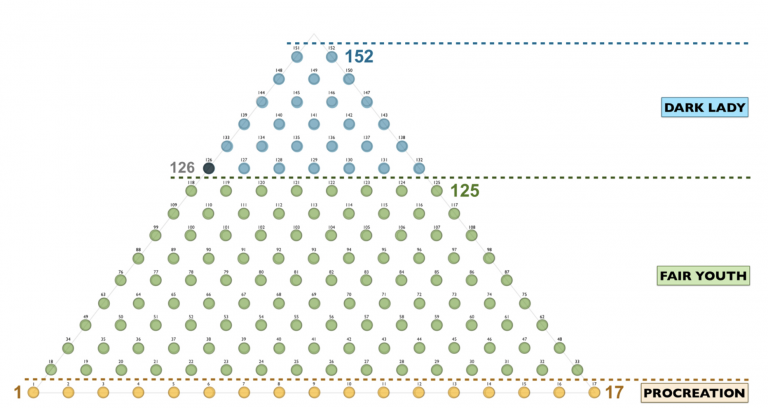
It’s rather striking, isn’t it, that if we temporarily exclude the Bath sonnets (as many scholars would have us do) the structure looks exactly like a very specific pyramid — the most famous one in all of Egypt — whose capstone, as far as history records, has always been missing!
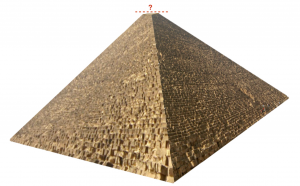
Perhaps the Bath sonnets in some way represent this missing capstone? But why are there two of them? The poet has been telling us over and over, mathematically and poetically, to look at the actual pyramid.
It goes without saying that pyramids are made of stones placed in ever-rising courses, from the foundational base to the capstone at the apex. The Hebrew word for stone is aben, אבן : a conflation of the words ab, meaning Father and ben, meaning Son.
To the ancient Egyptians aben, (Father/Son) is just one of the relationships that Osiris/Horus represented. Along with Isis, the universal Mother goddess, they constitute the earliest known version of the archetypal Trinity: Heavenly Father / virgin Mother / only begotten Son. The ancients’ religion was not monotheistic; they could easily assimilate the idea of Osiris/Father whilst still recognizing him as Osiris/Son of Nut, goddess of the night sky. Thus Father/Son and Son/Son were simply a change in the worshipper’s mindset in the same way that Osiris/Isis could just as easily be viewed as Husband/Wife or as Brother/Sister. They had no problem transcending categories, seeing everything, and every god, as ultimately all One. This is a crucial point when we consider the Egyptian creation story.
Their creator god, Atum, brought forth everything into existence out of the primordial waters called Nun or Nu (from the same root as our english word None or No-thing). Nun in Egyptian means abyss. Out of the watery nothingness the first created thing to appear was a mound called benben which grew into a pyramid shape. The capstone of that original pyramid was called benbenet, as are all capstones today (though sometimes shortened to benben). Given that the hebrew word for son is ben, it’s clear that benben carries within it this mysterious connotation of Son/Son. Moreover, the hebrew participle et, which completes the word benbenet, is formed from the letters aleph and tav (את), suggesting a deep hidden meaning that may hold a key to the Bath sonnets conundrum.
By its very nature, as the first and last letters of the hebrew alphabet, את is a symbol for “the Beginning and the End” or “the Alpha and Omega”. Interestingly et is never translated from the Torah to the Bible. Here are the first words of Genesis. The aleph/tav is underlined in the hebrew but as you can see it has no translation in the english.

This is because et inherently is the nothing of the abyss (Nun) and the everything of creation (Alpha/Omega). There is no english word that encompasses its full meaning. To the ancients its presence in the word ben/ben/et must have communicated the original significance of the capstone: Son/Son/Beginning to End, suggesting a perfect equality and balance that even Father/Son doesn’t convey exactly. The distinction seems to imply that all sons born into creation, from the beginning of time to all eternity, are equal. (And don’t forget that Egypt was not a patriarchy. Son/son would not have been politically incorrect to them; gender was all one.)
Jesus was referred to as both Son of God and Son of Man, and stated in Revelation 22:13: “I am Alpha and Omega, the Beginning and the End, the First and Last.”
But he also implied this state is accessible to all:
“He that believeth on me, the works that I do shall he do also; and greater works than these shall he do; because I go unto my Father.” — John 14:12.
Today we tend not to think so much much about the inherent power of certain words or the deeper meaning of their derivations. But Shakespeare lived and breathed words, intimately aware of their minutest implications and interconnections. If the pyramid metaphor is indeed his intended structure, then creating it was obviously a mission to him. But guiding us to its solution would have been an equal imperative. He was as much a man of the theatre as a cloistered poet; he needed an audience! And he would’ve done everything he could, using his prodigious skill with words, to show us how to decipher it.
He’s already given us the pure, unarguable mathematics in the Sonnets title page which led us to the geometry of the Great Pyramid itself. This in turn has revealed the same perfect equality built into the balance of its capstone angles: e in its invisible apex, π and ø in its height and side slope. It presents a virtual trinity of the world’s most important mathematical constants. He’s clearly working just as hard to show us the poetic beauty within these “Eternal numbers to outlive long date.”
The implicit connection between the Father/Son theme of the Procreation sonnets (the foundation) and the Son/Son implication of the Bath sonnets (the capstone) is a key to proving his intent. He put tremendous care and creativity into writing three separate sections that structurally mimic the Great Pyramid all the way up to 152. After that we’re confronted with a conundrum: the abyss of Khufu’s missing pyramidion. But what if the true meaning of the Bath sonnets has been completely misunderstood and they’re not the mistake many academics have assumed them to be? What if they are the capstone?
The Shakespeare scholar and Regius professor Emeritus of Edinburgh University, Alastair Fowler, once floated the hypothesis that the poet might have had the biblical triangular number 153 in mind as a hidden internal structure for his Sonnets.
“Simon Peter went up, and drew the net to land full of great fishes, an hundred and fifty and three: and for all there were so many, yet was not the net broken.” —John 21:11.
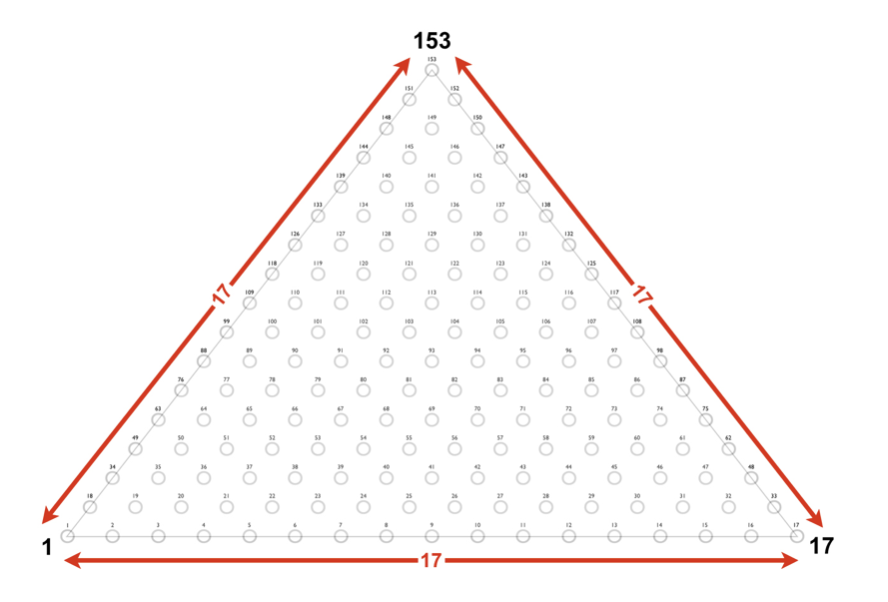
Fowler’s intuition was right but his idea never gained traction because he failed to satisfactorily explain the problem we are now facing; the 154th sonnet! If only he’d delved deeper he’d have discovered that the biblical story has its own Alpha/Omega mirror-image significance to it. Jesus actually performed this miracle twice; once at the beginning of his ministry, as recounted in Luke 5:1~11, and once at the end, after his resurrection, as quoted in John 21:11.
In the first instance the fishes are described as “a great multitude, and their net brake” and “filled both the ships, so that they began to sink” but their exact number remained undefined. In the second version the net doesn’t break and the very specific number, 153, is revealed. The story has become known as The Miraculous Catch of the Fishes.
Might it be that the Bard is conveying some deeper mystical meaning by creating a pyramid structure whose capstone represents this dual miracle? The ben/ben/et? Son of God/Son of Man/Alpha and Omega?
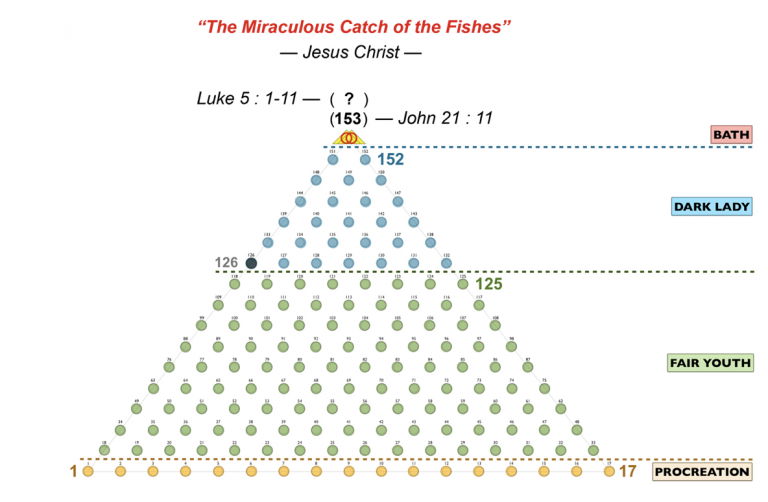
The breakthrough comes when we realize that 153 and 154 are essentially the same sonnet, just worded differently. They approach the identical subject matter from two perspectives, a phenomenon unique to the whole Sonnets sequence. In addition the dual pair are concerned throughout with diametrically opposed phenomena: Sun and Moon; Heat and Cold; Light and Dark. A few examples will suffice to illustrate:
“holy fire of love”; “the General of hot desire”; “heart inflaming brand”; “love’s fire took heat perpetual”:
— Sun/Heat/Light.
“A maid of Dyans”; “Nymphs that vowed chaste life”; “a cold valley fountain”; “quenched in a cool Well”:
— Moon/Cold/Dark.
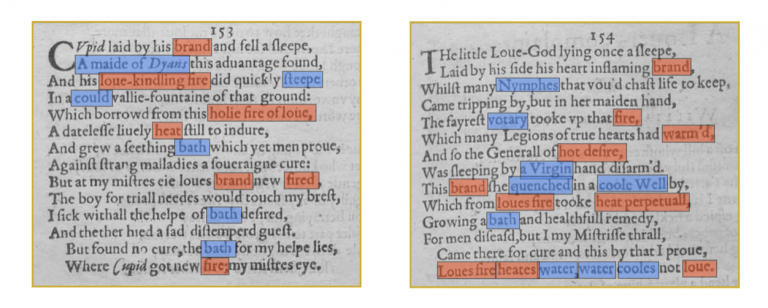
We’ve already observed the Bard using overtly cryptic wording to allude to the secret initiatory sect called the Rosicrucians. In Twelfth Night he shows us Malvolio trying to solve their most guarded password, but he fails to see the inherent mirror imagery hidden in the instruction: revolve M.O.A.I. The result, I.A.O.M., (though it contains within its letters the cryptic I AM the Alpha OMega) is not actually a Word as such, but the progressive stages of a sound intended to be breathed. Similar in function to pranayama techniques practiced by yogis, its ultimate purpose is to bring about spiritual enlightenment. This clue does more than solve its own inner meaning; it reveals the author’s intimate knowledge of the Rosicrucians’ highest esoteric goals.
There’s ample evidence in masonic literature suggesting that the central symbolism of the Rosicrucians revolved around a holy relic called the Aben stone, whose physical location is unknown. They equated this stone with the Holy Trinity and Christ’s resurrection… Father/Son (ab/ben) and Holy Ghost. In the Gospel of Mark, 21:42, Jesus quotes from Psalm 118, the metaphor of the stone that was rejected by the builders but exalted by God the Father to the highest place, the cornerstone. He’s predicting his own rejection and ignominious death, but also his glorious resurrection, symbolized by the most important stone in the ancient masonic traditions. To the Jewish temple builders it was known as the cornerstone; to the Egyptians it would be the capstone or benbenet.
In 1616 the Rosicrucians published a manifesto entitled The Chymical Wedding of Christian Rosenkreutz that had reportedly been circulated privately among members for decades prior. Its story is a lengthy metaphor for the alchemical union brought about by balancing the opposing forces of duality, thereby transcending earthly consciousness and achieving union with the divine Self. (In effect, the same intended result as the I.A.O.M. breathing technique.)
As preparation for his upcoming wedding (alchemical transmutation) Rosenkreutz must first become a Knight of the Golden Stone. The fact that orthodox Shakespeare scholars haven’t made the connections to Hamlet’s mysterious friends, Rosenkrantz and Guildenstern, is a huge academic omission. In Act IV of the the play they’re unwittingly recruited to deliver Hamlet to his death, the inciting plot point that finally propels the prince into decisive action and a complete reversal of roles. Rosenkrantz and Guildenstern are sacrificed in order to resurrect Hamlet — thoroughly alchemical symbolism — and nothing’s the same from here on out. Act V now powers through to its stunning conclusion because Hamlet’s transformation has quickened his being. All his actions now have singularity of purpose and nothing will stop him from killing his uncle, no matter who goes down with him.
The central Hamlet theme of an evil brother usurping the throne and the king’s son avenging his father’s death… this is the Set/Osiris/Horus resurrection story. And though the similarities have occasionally been noted by traditional scholars it’s never been followed through to its mythic conclusions because the Sonnets pyramid design has always remained undetected.
There’s also been a general unwillingness to investigate the Rosicrucian connections, possibly because alchemy itself has been so misunderstood. Most people think it was just about transmuting lead into gold, a process which took place in a vessel called the alchemical bath. Certainly there were worldly practitioners who only focused on the material goal, but to truly devoted adepts the real alchemy was the metamorphosis of the base ego into the pure Soul, often depicted as a wedding of Prince and Bride bathing together, preparing to undergo transmutation into perfect androgyny. The male/female participants really represent just one individual of course, balancing all the opposing qualities and tendencies that keep them earthbound, polarized in the consciousness of duality.
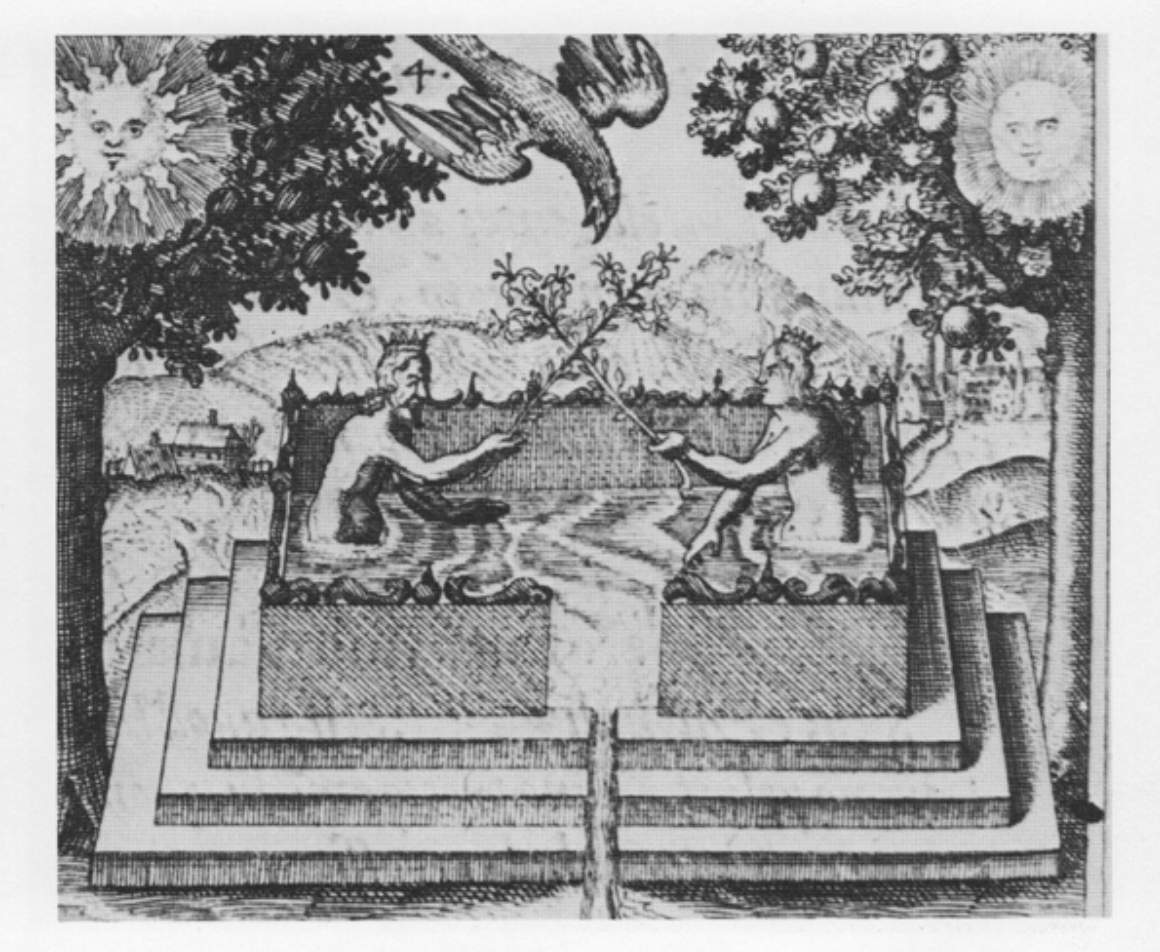
Shakespeare has chosen the most significant god possible to oversee the two Bath sonnets. The very first words of 153 and 154 are Cupid and The little Love-God, respectively. He’s the Roman version of the Greek god Eros, one of the primordial deities who came into existence at the beginning of time, out of the abyss. He’s described variously as the uniting power of love or the principle of unification. What more appropriate qualities could one ask for in a deity if the purpose is to bring these two sonnets together as one? It’s Cupid’s job description; he literally chooses two beings and makes them fall in love. (Duality into unity.)
If the Bath sonnets are truly a poetic metaphor for the process of balancing opposing forces (Sun/Moon, heat/cold, male/female) then we’ve solved the mystery of these duplicates.
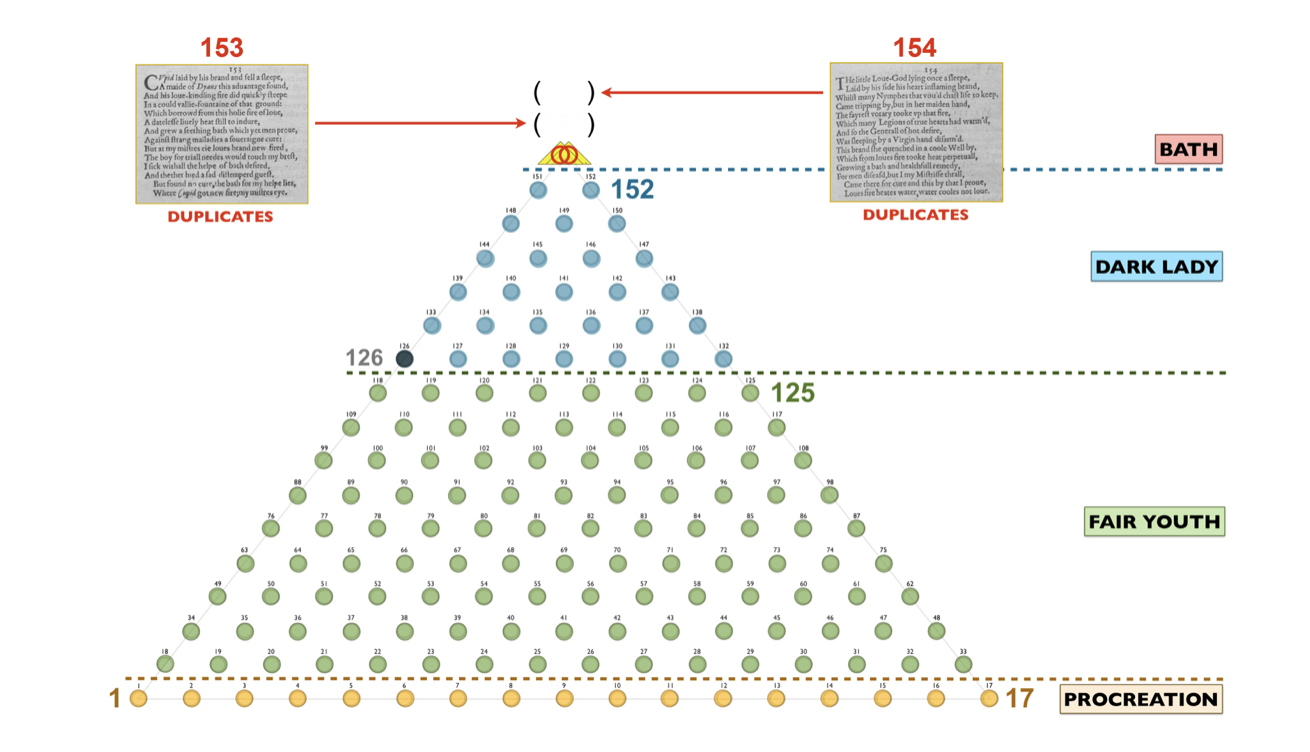
By uniting the power of the little love god, 153 and 154 are to be joined as one, chymically wed, balancing the Light and Dark (Fair Youth and Dark Lady) to result in divine union. At its deepest level this means the entire Sonnets sequence represents the spiritual journey from birth/procreation to death/resurrection. And by the process of true alchemy the pyramid is made whole and perfect, its missing capstone reconstituted.
